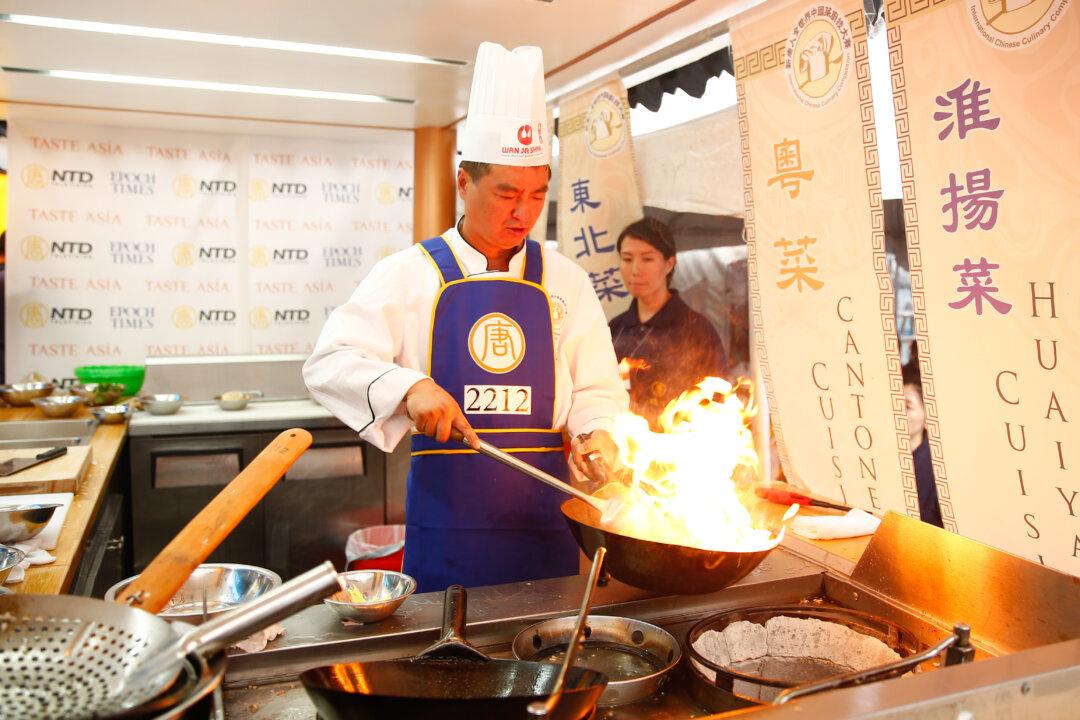NEW YORK—When it comes to Chinese cuisine, most of us in the Western world are only familiar with Cantonese and Sichuan food—dishes from the south and southwestern regions of China.
But what about food eaten in the rest of the country? There are actually three other major Chinese regional cuisines: Shandong cuisine, from Shandong province; Northeastern cuisine, from the area around Beijing and further north; and Huaiyang cuisine, from cities along the lower reaches of the Huai and Yangtze rivers.
To encourage more people to understand the rich and diverse culinary traditions of China, Chinese television network NTD Television hosted its 7th annual International Chinese Culinary Competition. Trained chefs from around the world gathered in Times Square, New York on June 27 for a cooking competition to determine whose skills could meet the judges’ high standards for authenticity of the dish, as well as the quality of the culinary artistry.
For the second consecutive year, NTD’s competition dovetailed with Taste Asia, New York’s Asian food and cultural festival, co-presented by Epoch Times.






